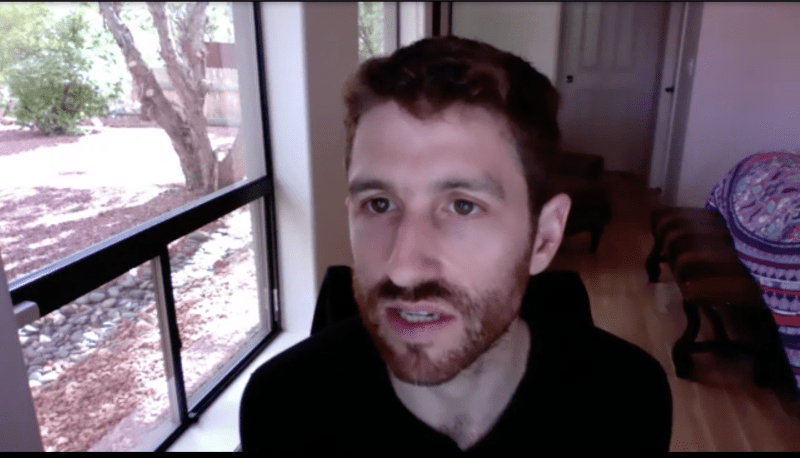Stanford alumni and cast members on Netflix’s “The Social Dilemma,” a documentary about the control tech companies exercise over billions of individuals’ decisions, said that prioritizing people over profits, democratizing technology and encouraging students to join the movement could mitigate the exploitation of users.
“The Social Dilemma,” which features technology experts who contend that big tech manipulates user behavior for profit to the detriment of society, broke Netflix records by reaching 38 million households in 28 days after its release in September. The documentary features Stanford alumni, including Center for Humane Technology co-founder Tristan Harris ’06, Asana co-founder and Facebook Like Button creator Justin Rosenstein ’04, associate psychiatry professor Anna Lembke M.D. ’95 and former Facebook executive and Pinterest president Tim Kendall ’99 MBA ’06.
Amid public skepticism about the growing influence and power of technology, “The Social Dilemma” reveals some of the best kept secrets of the tech industry that shed light on the dangers of social media. In the context of the documentary, the social dilemma refers to what the documentary characterizes as our developing obsession with increasingly addictive devices. This documentary joins the broader call for the mitigation of harm caused by technology and the creation of technology for the public good. Stanford groups, such as CS+Social Good and the Public Interest Technology Lab also work to address this issue.
Harris, nicknamed “the closest thing Silicon Valley has to a conscience” by The Atlantic, has advocated for reforming the tech industry since he left his position at Google in 2015. He told The Daily that a primary issue in the tech industry is that the creators of technology do not consider what impact they have on the world, despite the problems that the industry has caused.
“The people [in the tech industry] have incredible depth of expertise about what they’ve built, but not necessarily about how it’s impacting people and shaping culture,” he said. “It was obvious that we were driving up distraction, ruining the world’s attention, driving up addiction and weakening relationships.”
Rosenstein attributed many of the problems Harris identified to maximizing engagement being more profitable than working in the best interest of users of the technology. He said that “maximizing profit for that investor class has often very little to do with what actually is in service of life.”
Rosenstein also called for more diversity in perspectives when it comes to addressing the impact of technology. He said this could be accomplished by including people from outside of the industry in tech-related conversations to ensure that technology is built in the interest of the people who use it.
“I think the appropriate role of a technologist is in service to the goals that are agreed upon by humanity as a whole,” he said. “More or less by diverse, representative cross sections of humanity and of different skills and disciplines.”
Lembke identified compulsive over-consumption of social media as another negative impact of technology, which she said can lead to depression and isolation in the long-run. While she added that she does not think that social media use will automatically lead to addiction, she said that “we all need to be more aware of the ways in which these devices entice us to compulsively over utilize them and to have difficulty stopping.”
Lembke contended that companies and individuals share the responsibility of thinking about how they will manage the issue of over-consumption and addiction going forward.
“[Tech companies] can’t just continue to profit and to promote engagements with impunity,” Lembke said. “The time has come for a reckoning in terms of recognizing that [technology is] a drug and helping consumers understand that and helping giving consumers a tool for limiting consumption.”
Alumni from the documentary also said that Stanford students interested in technology are not doomed to perpetuate the social dilemma.
“We’re at ground zero for creating these technologies,” Lembke said. “These are the very people who should be at the forefront in terms of coming up with solutions.”
Harris encouraged Stanford students to enter the tech industry with the intent of finding solutions to the dilemma.
“You, the Stanford students, actually have an incredible amount of power,” Harris said. “If you do work [for a big tech company], continue to push for change on the inside. The only way that this changes is if each one of us changes our behavior.”
These solutions can begin as small as a question, according to Kendall, like “How are you using your phone?” or “Do you want to join a company that might be contributing to the problem?”
In answering these questions, Stanford students can reflect on the path they want to take, according to Kendall.
“It all comes down to choice,” he added. “Big Social cannot survive if their talent pipeline runs dry.”
Contact Malaysia Atwater at matwater ‘at’ stanford.edu, Marli Bosler at mbosler ‘at’ stanford.edu, and Julia Hernandez at juliabh ‘at’ stanford.edu.
